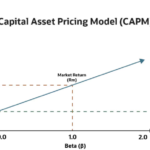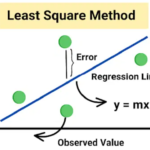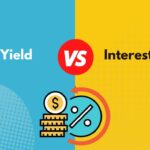
By ATGL
Updated December 24, 2024
When it comes to generating wealth, dividend investing is often touted as a reliable strategy that combines both income and potential for growth. However, beneath this alluring surface lies a complex web of risks that every investor should be aware of. Understanding these risks is essential for making informed decisions in the pursuit of financial independence.
Dividend investing involves purchasing stocks of companies that distribute a portion of their earnings as dividends, creating a steady income stream. While the concept seems straightforward, dividend stocks come in various forms, each with its own set of dynamics and implications. Understanding the landscape of dividend stocks is paramount for any prospective investor.
In this article, we will delve deep into the crucial aspects of dividend investing, guiding you from the basic principles to the potential pitfalls that may arise. By exploring not only the benefits but also the inherent risks, we aim to equip you with the knowledge needed to navigate the complexities of dividend investing successfully.
Understanding Dividend Investing
Dividend investing is about buying stocks that pay dividends. These dividends are parts of a company’s income given to holders of its stocks. Investors usually receive these payments every three months in cash or additional shares. This investment strategy offers two types of gains. First, the regular income from dividend payments. Second, the potential rise in stock price over time.
For many investors, dividend stocks are appealing. This is because they often belong to large, well-known companies that have steady earnings. Such businesses tend to be stable and operate in mature markets. They’re also more likely to share profits with their investors.
But dividend investing comes with its risks. A big one is tax. Money earned from dividends can be taxed more than profits from selling stocks. This can affect how much you ultimately earn. Other risks include the chance of companies cutting or stopping dividends, changes in interest rates, and general economic swings. It’s crucial for investors to keep an eye on these factors to avoid losses.
What is Dividend Investing?
Dividend investing involves picking stocks of companies that regularly pay dividends. These are often large and financially solid companies. They’re known for sharing profits with investors rather than reinvesting all of them back into the business. Dividends provide regular income and can be in the form of cash or additional shares.
Investors who choose dividend stocks gain in two ways. They earn money from the dividends directly. Also, there’s the possibility of the stock price rising, giving them a valuable asset over time. This dual advantage makes dividend investing attractive for those seeking both income and growth.
The companies that consistently pay dividends often have a good track record. Many operate in mature sectors where they have fewer growth opportunities. Instead of putting their profits back into the business, they return a portion of them to the shareholders. This appeals to investors looking for solid returns over the long term.
Often, companies paying dividends are regarded as less risky. Investors view them as stable and reliable, capable of weathering economic downturns.
Types of Dividend-Paying Stocks
Stocks that pay dividends come from companies that choose to share their profits with investors. These payments usually happen four times a year. Many firms offering dividends are large, established ones with reliable earnings records. This stability makes their stocks a possible lower-risk choice for some investors.
In mostly settled industries, companies might have fewer opportunities to grow. Instead of keeping all profits for growth, they decide to give some back to their shareholders. This is where dividend-paying stocks come in. While they might not promise high growth, they do offer a regular income stream, attracting income-focused investors.
There are different kinds of dividend stocks to consider. Below are a few popular categories:
- Income Growers & Initiators: These companies have just started paying dividends or have a history of raising them regularly. They’re often seen in a positive light, as increasing dividends can signal a company’s growing strength.
- Dividend Aristocrats: This group consists of companies known for consistently increasing their dividend payment over several years. Such businesses exhibit strong financial health and a commitment to their shareholders. Investing in these stocks can offer a sense of security and predictability to investors.
- High-Yield Stocks: These stocks belong to companies that offer above-average dividend yields. While this means higher immediate income, these stocks may come with more risk. The company’s financial stability should be thoroughly analyzed before investing.
For anyone considering dividend investing, it’s vital to understand these different types. Each offers unique characteristics and serves different investment goals. Deciding which type fits one’s risk tolerance and financial objectives is key to a successful investment strategy. A diversified approach, combining different types, can further help mitigate risks while maximizing potential returns.
Key Advantages of Dividend Investing
Dividend investing gains attention for its ability to combine income production with growth potential. It stands out because it offers the dual advantage of regular income from dividends and the possibility of stock price appreciation. Investors find dividend-paying stocks appealing, especially in volatile markets, due to their perceived safety and consistent returns. However, as with any investment strategy, it is crucial to understand its inherent risks and potential drawbacks.
Steady Income Stream
Dividend-paying stocks provide a steady income stream through either cash or stock dividends. These payments reflect a company’s confidence in its financial outlook. Dividend growth stocks, in particular, can offer an increasing income over time, especially important for retirees who rely on dividends to cover expenses.
Steady Income Stream
Dividend-paying stocks offer investors a steady income stream. This regular income reflects the company’s confidence in its stability and financial health. Over time, dividend growth stocks provide an increasing income stream. This growth is vital for maintaining one’s lifestyle and covering expenses, especially during retirement.
Here’s a quick breakdown of benefits:
- Regular Income: Dividends provide consistent cash flows.
- Tax Efficiency: Qualified dividends are taxed at lower rates.
- Less Volatility: Dividend-paying companies tend to be more stable.
- Dual Income Sources: Investors benefit from dividends and potential capital gains.
Dividend stocks are often less volatile. They offer downside protection during market turbulence, helping maintain a stable income stream.
Key Factors of Dividend Stocks
| Factor | Benefit |
|---|---|
| Consistent Payouts | Regular and steady income |
| Tax Benefits | Lower rates on qualified dividends |
| Financial Stability | Reflects company’s confidence |
Dividend investing combines steady cash flow with potential capital appreciation, making it a viable investment strategy. This approach ensures not just regular income but the possibility of growing one’s investment over time.
Long-Term Growth Potential
Investing in dividend growth stocks offers significant long-term growth potential. Companies that steadily increase their dividend payments are usually well-established and financially healthy. These entities often demonstrate resilience even in tough economic times, which is crucial for sustained growth.
Here’s why these stocks stand out:
- Solid Balance Sheets: Dividend growth companies typically have strong financial positions, reducing investment risks.
- Consistent Cash Flows: Growing dividends indicate increasing cash flows, reflecting the company’s financial health and growth prospects.
- Lower Volatility: Compared to high-yield stocks, dividend growth stocks tend to offer lower volatility, ensuring steadier returns over time.
- Capital Appreciation: Besides regular income, these stocks provide potential capital appreciation, balancing income needs with growth.
Consider this comparison:
| Aspect | Dividend Growth Stocks | High-Yield Stocks |
|---|---|---|
| Income Growth | Higher | Lower |
| Volatility | Lower | Higher |
| Capital Appreciation | Higher | Limited |
In summary, dividend growth investing not only offers consistent dividends but also presents long-term growth potential. This investment strategy aligns well with investors seeking steady income and growth in equity securities over time.
Disadvantages and Risks of Dividend Investing
Investing in dividend stocks can be rewarding, but it also comes with its own set of challenges and risks. Here, we explore the various disadvantages and potential risks associated with dividend investing.
Dividend Cuts and Reductions
Dividend cuts and reductions can significantly impact investors. When a company cuts or suspends its dividend, it often reflects a struggle in maintaining cash flows or changing dividend policies to conserve cash. This can erode the stock value and investor confidence, leading to potential losses. A reduction diminishes the compounding effect of reinvesting dividends, which can lower long-term returns. Reliable dividend payments support investor confidence, making unexpected cuts a signal of possible financial distress or poor management.
Interest Rate Fluctuations
Interest rates have a profound impact on the attractiveness of dividend stocks. Rising interest rates tend to make fixed-income securities more appealing, prompting investors to shift away from dividend stocks. This shift occurs because, in high inflation environments, risk-free rates rise, overshadowing the appeal of companies with uncertain growth. Consequently, high dividend stocks can see an outflow of investments, particularly when interest rates are low, as they offer better yields than government bonds.
Valuation Risks
Valuation risk arises when investors pay too much for a dividend stock, cutting into returns and increasing potential losses. Stocks with high dividend yields may signal overvaluation or financial issues within the company. A stock trading at a high price relative to factors like earnings or growth prospects could mean investors face reduced returns if their expectations aren’t met. Analyzing valuation metrics carefully helps avoid the pitfalls of overvalued investments.
Growth Risks
Dividend growth investing requires patience and a long-term perspective. Though the strategy focuses on stable companies that increase dividends, interest rate hikes can prompt investors to switch to assets with potentially higher returns. This shift reduces demand for dividend stocks, impacting their price. Additionally, stocks with high yields but slow growth rates may be more vulnerable to interest rate changes, affecting their overall performance. Valuation risk also emerges here if investors overpay, reducing yields and increasing loss potential.
Tax Implications of Dividends
Tax implications are a crucial factor in dividend investing. Dividend income is subject to annual taxation, potentially reducing after-tax returns. Investors in higher tax brackets may face a disadvantage when compared to growth stocks that defer taxation until the stock’s sale. Even when dividends are reinvested, taxes are still owed, affecting cash flows. As long-term capital gains often bear lower rates, understanding taxation on dividends is vital for net return calculations.
Sector Concentration Risks
Dividend-paying stocks are often concentrated in specific sectors like utilities, consumer staples, and real estate. This concentration poses a risk if these sectors face underperformance or regulatory changes. Overconcentration can increase portfolio volatility and reduce diversification benefits. Sector concentration risk underscores the need for careful portfolio analysis to ensure stability and performance.
In conclusion, while dividend investing offers potential benefits, understanding the associated risks and challenges is crucial for making informed investment decisions. Balancing these risks with other investment strategies can help ensure a more diversified and resilient portfolio.
The Impact of Market Volatility
Dividend-paying stocks often offer more stability and certainty in dividend payments. This stability provides valuable downside protection during periods of market volatility. During economic challenges, the defensive reputation of dividend strategies becomes more pronounced. Investors gravitate toward high-quality dividend-paying and dividend-growing companies. Historically, companies that consistently grow their dividends have delivered good returns with lower volatility. This leads to strong risk-adjusted returns compared to broader global equities.
Dividends have historically accounted for an average of 40% of total returns in the S&P 500 Index from 1960 through 2021. This significant contribution underscores their importance as a buffer against market fluctuations. The relationship between dividend growth and company financial strength can predict future performance, offering strategic advantages in turbulent market conditions. During market downturns, the emphasis on dividends grows because they can lessen the impact of volatility on a portfolio.
How Volatility Affects Returns
Volatility refers to the tendency of a market index or security to experience significant price fluctuations. It is often viewed as a measure of risk due to its potential for higher losses. Stocks with a beta greater than 1 are more sensitive to market volatility. This indicates that their prices tend to swing more dramatically compared to the overall market.
Dividend-paying stocks can lower overall portfolio volatility and provide a buffer against losses during market downturns. This makes them appealing to investors looking for stability. The steady income from dividends can also be a source of regular income for investors. A study by Hartford Funds revealed that stocks of companies consistently growing their dividends exhibit both higher returns and lower volatility compared to peers that do not grow dividends.
Coping Strategies During Market Downturns
Dividend-paying stocks historically help to lower volatility and buffer losses during market drawdowns. This makes them a strategic choice during downturns, a time when the stock market can be unpredictable. The income from dividends assists investors in meeting liquidity needs, especially when market conditions are challenging.
It’s important for investors to understand that targeting high dividends can expose them to risks. Dividends can shrink or disappear during recessions. For example, during the COVID-19 pandemic, an estimated $220 billion in dividends was cut globally from April through December 2020. To mitigate these risks, diversifying investments across different industries and sectors is crucial. This reduces sensitivity to interest rate fluctuations that can impact dividend-paying stocks.
In summary, while dividend-paying stocks offer stability during volatility, investors must remain vigilant. By diversifying and focusing on quality dividend growth, they can better weather economic challenges. This balanced approach helps harness the benefits of dividend investing while managing potential risks.
Assessing Company Financial Health
Investing in dividend stocks requires evaluating a company’s financial health to avoid risks like dividend cuts. A company’s ability to maintain dividends depends on its financial stability. Poor financial health can lead to unsustainable payout ratios, threatening dividend payments. Before investing, examine a company’s financial statements for crucial insights.
Return on equity and cash flow statements offer a clearer picture of financial health than total debt alone. These metrics indicate whether a company can sustain future income streams. High dividend yields can sometimes hide underlying business problems. Stocks with declining prices may present elevated risks despite their appealing yields.
Companies that can sustain or increase dividends tend to show resilience. This stability can boost investor confidence. First-time dividend payers lack a track record, requiring investors to scrutinize their financial conditions closely before investing. A history of consistent or growing dividend payouts is often a sign of a financially sound company.
Key Financial Metrics to Consider
Several metrics are essential when evaluating dividend-paying stocks:
- Dividend Yield: This measures the dividend as a percentage of the company’s share price. It’s crucial for comparing the income potential of different dividend stocks.
- Dividend Growth Rate: This indicates the rate at which a company has increased or decreased its dividends over the years. It helps assess dividend sustainability.
- Historical Volatility: Metrics such as 5-, 20-, 50-, or 200-day volatility can indicate how much a stock’s price has fluctuated. This gives insights into short-term price behavior.
- Standard Deviation: This measures how much the stock’s returns deviate from its average return. A higher standard deviation means more substantial price swings.
- Free Cash Flow and Payout Ratio: Free cash flow is the cash a company can distribute without harming operations. The historical dividend payout ratio shows how much of the earnings are paid as dividends, crucial for assessing potential cuts.
Evaluating Dividend Sustainability
Dividend sustainability revolves around the Free Cash Flow (FCF) Payout Ratio. This ratio measures how much of the free cash flow is used for dividend payments. A ratio above 100% signals that a company might not sustain its dividends with operational cash flow alone. It may resort to borrowing or selling assets, which is risky.
A long history of dividend growth usually suggests strong company performance. It often reflects an ability to generate increasing free cash flow consistently. A lower payout ratio can be positive, indicating retained earnings for growth and the capacity to maintain dividends during economic downturns.
Investors should assess free cash flow and historical payout ratios to determine if a company can provide consistent dividends. This consideration affirms the company’s financial ability to meet dividend obligations even in challenging times.
Building a Resilient Dividend Portfolio
Building a resilient dividend portfolio is essential for investors seeking a stable and growing income stream. Companies that consistently grow their dividends are usually well-established firms with solid balance sheets and strong earnings. These attributes enhance the stability of a dividend portfolio. Historically, dividend-paying stocks that maintain and grow payouts have provided strong risk-adjusted returns. They often outperform broader global equities over the long term. This makes dividend growth investing a vital part of a resilient portfolio strategy.
Dividend-growing companies are known for their resilience during tough market conditions. They often experience lower average drawdowns compared to other stock types. This makes them a safer option for investors with a low risk tolerance. The potential for capital appreciation, coupled with increasing dividends, offers an inflation-protected income stream. This feature strengthens a dividend portfolio against economic fluctuations.
However, investors must pay attention to tax considerations. High dividend yields can negatively impact after-tax returns if not properly managed. Keeping an eye on the qualified dividend percentages can help maintain overall performance.
Diversification Strategies
Diversification is crucial in managing a dividend-paying stock portfolio. Too much concentration in specific industries, such as utilities and real estate, can increase risk. By diversifying across various sectors, investors can reduce the volatility and risks of underperforming sectors. A well-diversified portfolio offers increased stability against market fluctuations, providing a layer of protection for investors seeking regular income.
Interest rate risk is another concern for dividend investors. Rising rates can make some sectors less attractive. By diversifying investments, this risk can be offset, maintaining portfolio stability. Investors should look beyond high dividend yields. A diversified approach can minimize the risk of overpaying for individual stocks. This strategy helps in managing potential valuation risks.
Reinvesting Dividends for Growth
Reinvesting dividends is a powerful tool for long-term portfolio growth. Younger investors, in particular, can leverage the power of compounding through reinvestment. This strategy allows dividends to purchase additional shares, enhancing portfolio growth over time.
Firms that commit to dividend growth often showcase stable cash flows and effective management. As these dividends increase, reinvesting them enables the acquisition of more shares, contributing to substantial investment growth. Dividend growth stocks also act as a hedge against inflation. Increasing dividend income helps maintain the investment’s purchasing power.
Historical data supports the importance of reinvesting dividends. Investors have enjoyed an average annual total return of 7.69% from companies that maintained their dividend rate over 30 years. This underscores the significance of dividends in overall investment performance.
In summary, to build a resilient dividend portfolio, focus on selecting companies with solid financial health and the ability to grow dividends. Diversify your investments to manage risks effectively. Lastly, reinvest dividends to harness the power of compounding for enhanced growth over time. Join Above the Green Line today and avoid the risks with investing.






